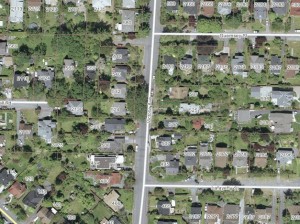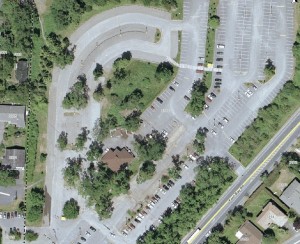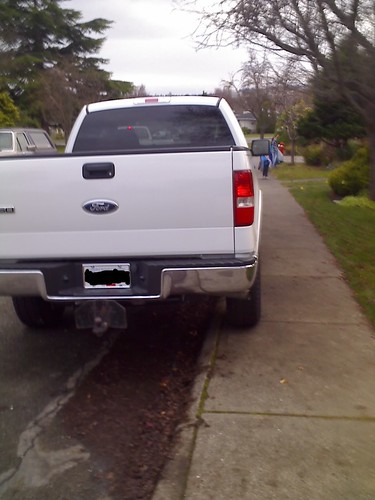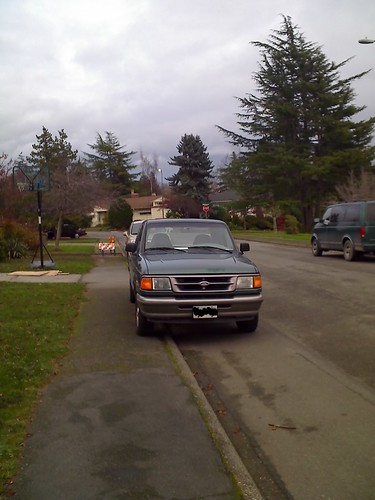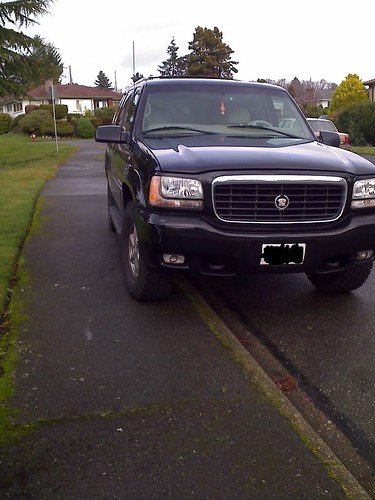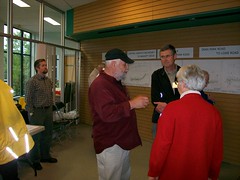
I had heard the rumours of bike lanes and sidewalks on East Saanich Rd., so when I learnt that North Saanich was hosting an open house to display the plans, I decided to check it out. The open house took place over three hours in room just off the lobby in the Panorama Rec. Centre. With 60 people trickling through over the course of the evening, it was well attended event, always good for getting as much feedback as possible. On hand to answer questions and take comments North Saanich engineering staff, engineering staff from Declan, the consultant, as well as Councillor Peter Chandler. Mayor Alice Findall also stopped in for a few moments in the early parts of the evening.
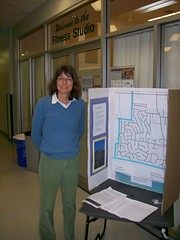
Outside the map room was the People for a Pedestrian Dean Park, a group seeking to make the Dean Park neighbourhood safer for walkers and bikers. Suzanne Mophet, who founded the group, had setup a large board with a map of the neighbourhood and was asking people about where they would like to see pedestrian paths, sidewalks and other amenities. She and I ended up having a long conversation about the challenges of traffic calming in the newer suburbs, especially with regards to getting political and popular support.
While I got a sense during the night that most people were supportive, I was confirmed with I spoke to Baohua Duan, one of the North Saanich Municipality’s engineering techs the next day. She is responsible for compiling all the myriad feedback from the 37 response forms. She confirmed that the overwhelming impression was very positive.
All in all, it was a very well run event. Kudos to North Saanich for giving the public the opportunity to give feedback. The Declan and North Saanich engineering staff were great at answering nearly any question and having a councillor on hand was a nice bonus. I am looking forward to early fall when all the construction (North and Central Saanich) should be done.
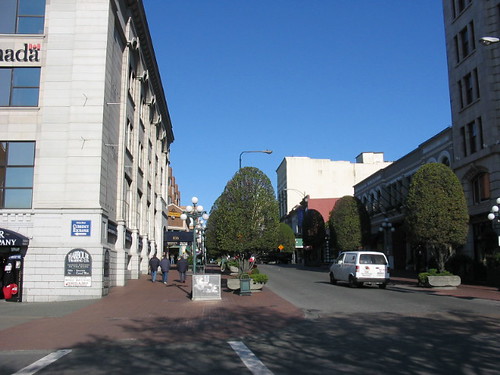

 Yet from the car’s perspective, the world is very very green:
Yet from the car’s perspective, the world is very very green: 
